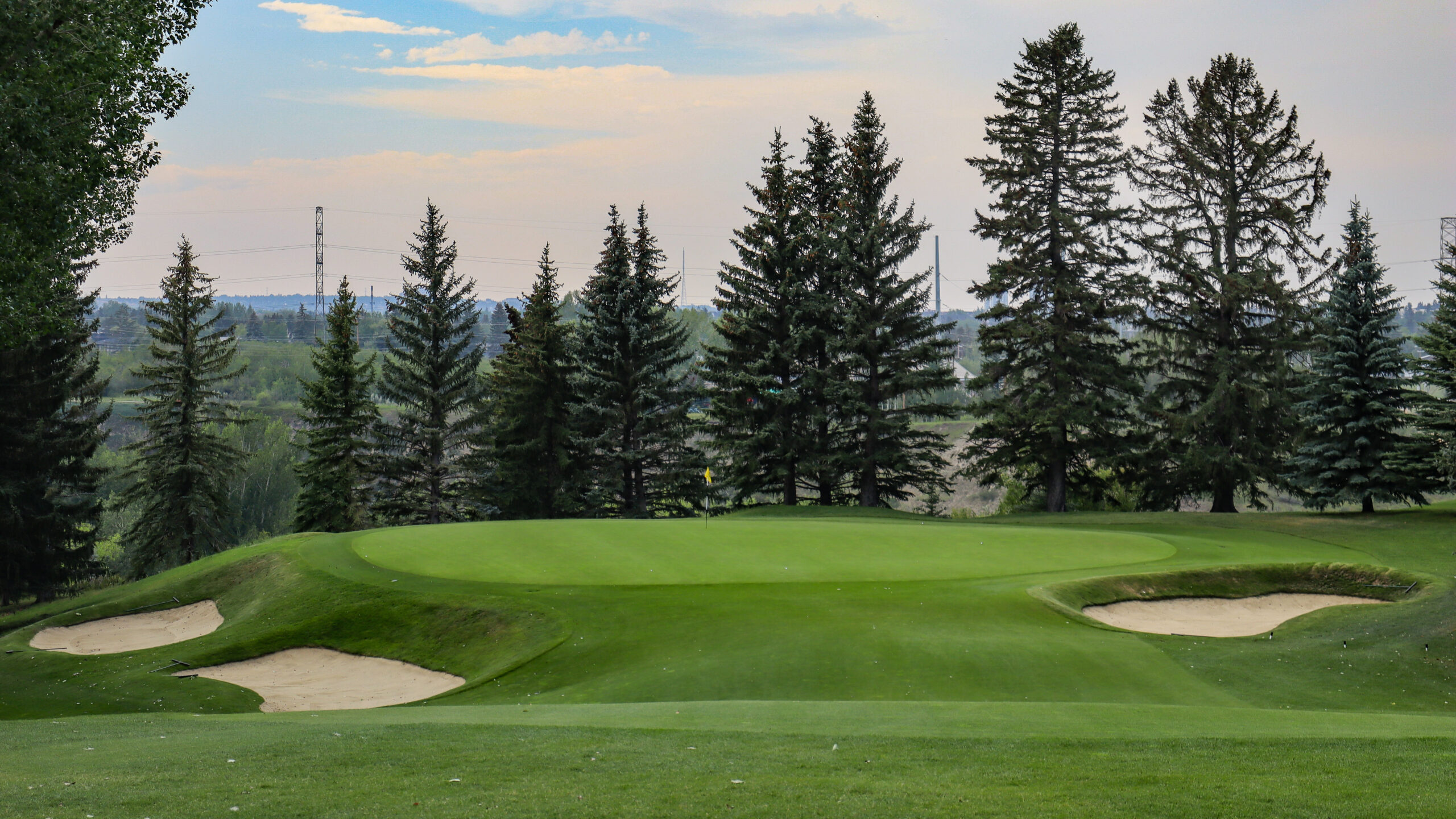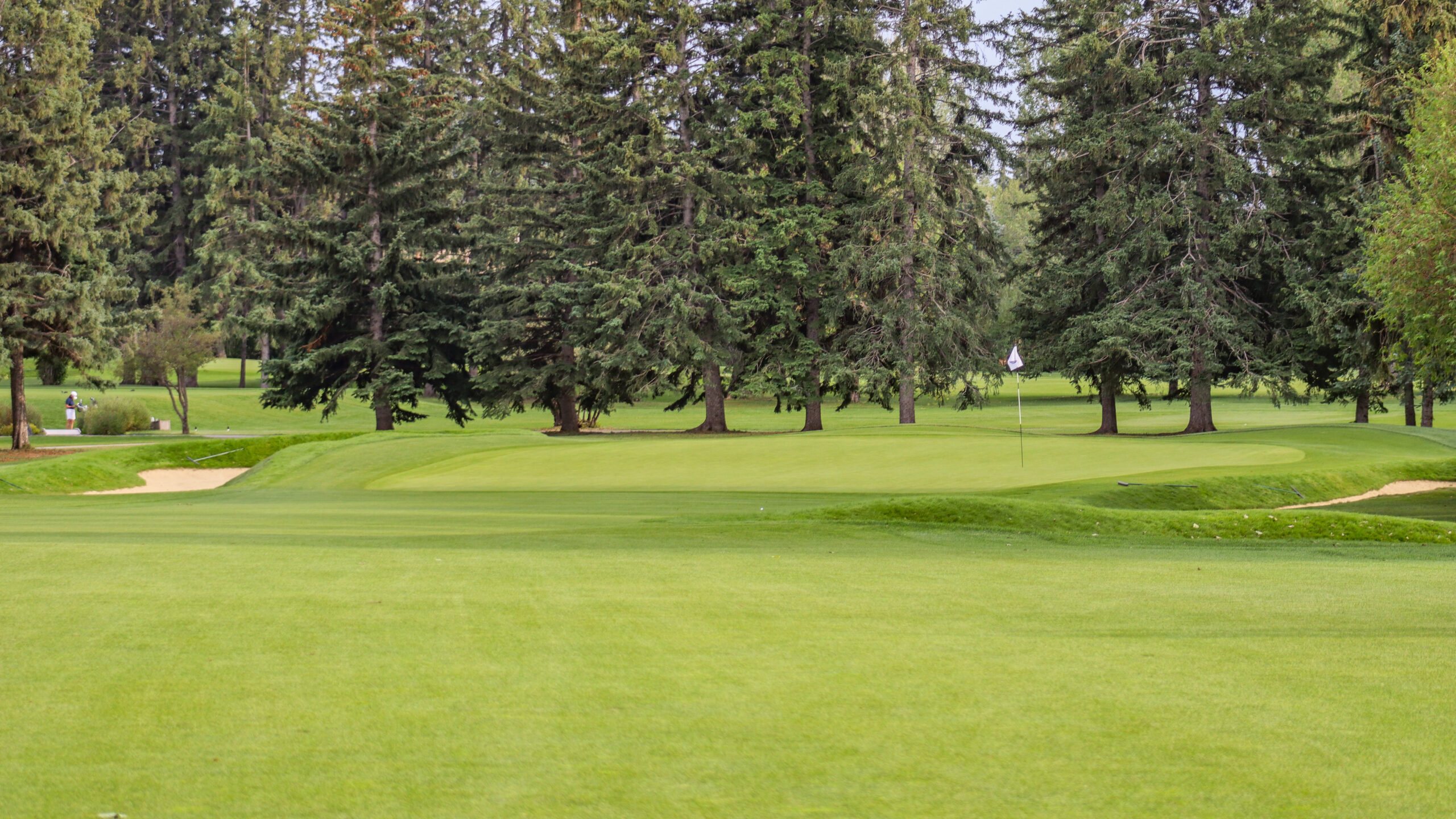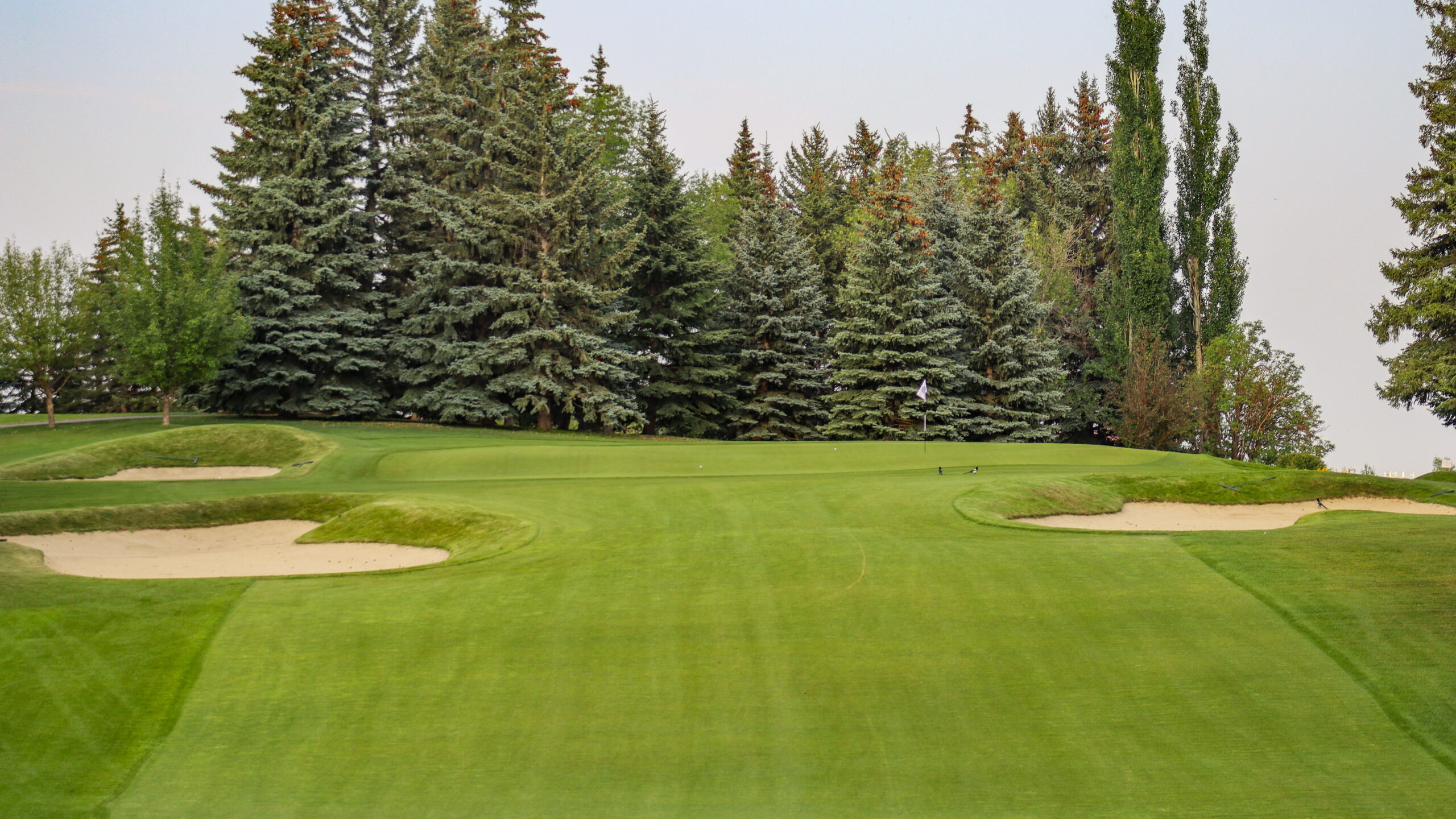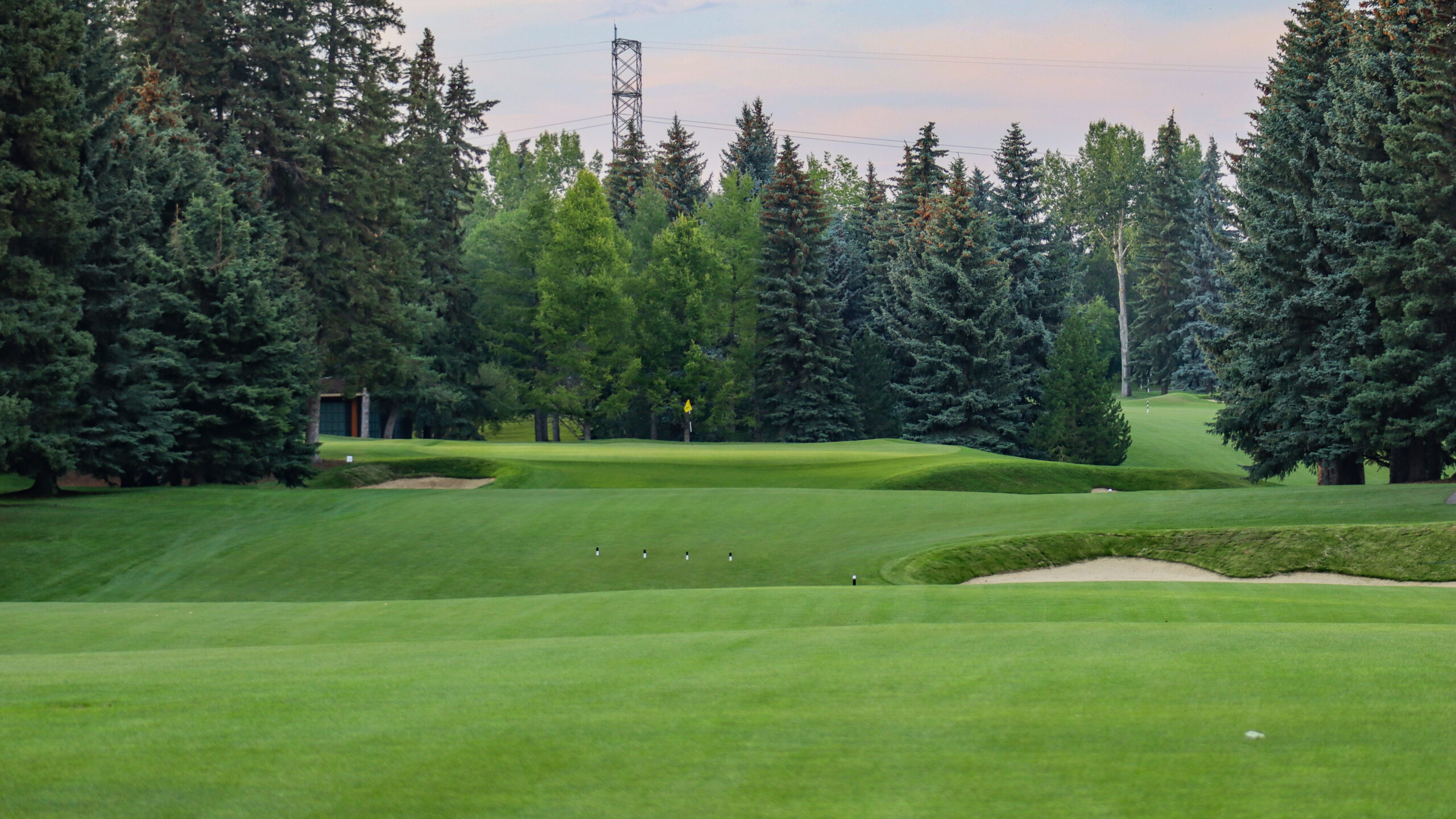Canada’s Golden Age is not quite as celebrated as it is in the United States. True, the Great White North had many of the same contributors: Donald Ross, A.W. Tillinghast, Harry Colt, C.H. Alison, Devereux Emmet, Walter Travis, Stanley Thompson, Willie Park Jr., A.V. Macan, Herbert Strong, and more contributed to the the country’s landscape, though a majority of their golf courses were in Ontario and Quebec, with only a handful heading west of Ontario.
Of that list, A.V. Macan—who resided in Victoria, British Columbia—Stanley Thompson (naturally given his presence in Canada coast-to-coast), Donald Ross, Harry Colt, and Willie Park Jr. made their mark on Western Canada. In the case of Donald Ross and Willie Park Jr., they both designed golf courses in Winnipeg, Manitoba’s golf scene, though all of Willie Park Jr.’s contributions were officially scrubbed from the history books when Southwood closed in 2007 (replaced with a new Thomas McBroom golf course on a new location when the club moved). Ross’ work is still ever-present in Winnipeg, with Elmhurst and Pine Ridge to the northeast of the city, and nine holes at St. Charles in Winnipeg proper. Ross made it as far as Banff, Alberta, though Stanley Thompson’s current layout quickly replaced Donald Ross’ routing (the 2nd and 6th at Banff Springs are still, largely, Donald Ross holes, and to the right of the 7th tee you can see remnants of Ross’ original golf course).
Willie Park Jr. also ventured to Alberta, contributing to Calgary’s golf scene in a couple locations. One being Calgary St. Andrews, which is currently (and unfortunately) residing under housing in the western portion of the city. Similarly, Park Jr. also renovated Bowness, Harry Colt’s furthest west golf course, but it also no longer remains, largely resting under the Trans-Canada Highway and Calgary’s Olympic Park used for the 1988 Winter Olympics (famously the location of Eddie the Eagle‘s Olympic appearance). The final location, Calgary Golf and Country Club, remains. Willie Park’s presence in Western Canada was once significant, with numerous credits in both Winnipeg and Calgary. Now, reduced to a single golf course.
Park’s layout originally opened in 1922 following an extensive overhaul of Tom Bendelow’s previous iteration, and alongside Mount Bruno, remains as the two best Park Jr. golf courses in the country.
Holes to Note
First hole, 468 yards; One might be hard-pressed to find a more severe uphill climb for an opening hole in not just Canada, but the world of golf. Calgary Golf & Country Club’s property is not without its limitations and flaws, and one of those being the steep bank that divides the clubhouse’s location on the shore of the Elbow River from the high-sided holes at the 3rd-8th and 12th-17th. For both the front and back nine, Willie Park Jr.’s routing climbs sharply out of the valley on the opening holes to tackle the climb early.

Certainly, there are more enjoyable ways to open a round of golf than climbing 120 feet out of a river valley, but when assessing the function of the routing and especially on this property, it makes sense. Mind you, this is no 600+ gargantuan beast… at considerably less than 500 yards, it lets every golfer ease into the round even with the climb, and for those aggressive off the tee, a reasonable chance at getting home in two shots if the tee ball can avoid the bunkers up the right.

Lovingly dubbed “heart attack hill,” the 1st is the most severe climb on the golf course
Much like the famed first green at Winged Foot (West), the opening green is the star of the show early. With a front-central knob deflecting traffic to the outside edges, a false front on either side of the aforementioned knob, and flared up sideboards with a backstop, the 1st at Calgary is one of the finest greens in the country and one you’d want to replicate in your backyard—there are, quite literally, hundreds of shot options in and around here, and the pin locaton changing illuminates the brilliance of this green with each new round.

The brilliant 1st green at Calgary
Second hole, 184 yards; It is not uncommon for golfers to overcomplicate golf holes in the spirit of strategy, but not every hole needs to, or should have, multiple ways to play it. Par 3’s are fundamentally a part of the penal school of design—hit it here, or else—which tends to create some of the most interesting singular swings throughout the round, and without question has produced its fair share of iconic golf holes.
The second at Calgary, neither strategic nor heroic, is downright terrifying, with a severe tilted green from the high back-right side working its way down to the bunkers short-left. The left side in particular is rather terrifying, with any ball not making it halfway through the depth of the green’s left-side likely ending up working away from the hole, with the worst case scenario of ending up in the bunker a very real possibility, depending on the day and how speedy and firm the putting surfaces are.

Sixth hole, 390 yards; Once Willie Park’s routing transports the golfer atop the river valley following the climb at the opener, much of the front nine is a gentle piece of land. Yes, there are rolls and hills to navigate, but nothing too severe or dramatic: just good, solid golf. The sixth, however, is perhaps the hole that utilizes its terrain in the most effective way possible, maximizing the gentle rise and fall to create a semi-obstructed tee shot. On the inside corner of this dogleg left, playing as close to the bunker grouping on the inside corner opens up a much easier second shot coming into the low-resting green.

The top of the flagstick is visible over the left side bunkers
A proper tee shot allows the golfer to relax with a relatively tame short iron or wedge into one of the more restrained greens at Calgary—although, it still sees some gentle rolls and ripples and is anything but uninteresting. A misplaced tee shot sets up a semi-obstructed second shot, and anything flared out to the right on this dogleg left now brings in play the two bunkers up the right side approaching the greens. The short right bunker some 15 paces from the front edge of the green is brilliant, perfectly placed to catch the timid shots from virtually anywhere on the hole not in the middle, but certainly from either of the four bunkers in the tee shot’s landing zone.

Eleventh hole, 168 yards; Calgary’s property is abrupt and divided, with the 1st and 10th holes working their way out of the river valley, and the 9th and 18th dramatically falling down. The 10th, altered post-Willie Park Jr., only goes halfway up the hillside, meaning a long walk between the 10th green and 11th tee.
At arrival, a charming middle-length par 3 working its way up the hillside to a rumpled green with a pronounced back-left shelf and a raised right side entirely awaits. The green’s pad sits on-grade and with the natural slope before perching itself above the surrounding low ground right—any pin on the right is complicated, while left flags provide a far more relaxed environment. It should be noted that this is the final climb in the routing. From here-on-out, the routing provides either a gentle rise or fall, or a tumble down into the valley where you started.

Thirteenth hole, 591 yards; Most of the macro interest at Calgary comes from the journey between the high and low portions of the property given the steep embankment that divides the two, while the high side ground interest generally comes with Park’s routing prowess putting a small ridge, swale, or hill directly into the line of play, maximizing the terrain that directly affects the routing. The thirteenth, however, is the most exciting fairway on the golf course, with beautiful gentle rolls tee-to-green.
- The tee shot view on the 13th
- A zoomed in look at the contour in the 13th fairway
First task: navigating the three fairway bunkers off the tee, and similarly, keeping it out of the bunkers approaching the green is paramount. While a longer par 5 on the scorecard, the city of Calgary sits at over 3,000 feet above sea level, meaning on a nice summer day, long hitters with a good tee ball should be able to push it and get close or on the green. Somewhat brilliantly, the right greenside bunker is set further back than the left one—though both cut into the up slope the green sits on the other side of with a false front defending against the short shot—meaning any weak and right shots will face a difficult recovery shot.
While not necessarily the flashiest hole visually, nor strategically, the thirteenth is blessed with some of the more interesting topography to cover on the golf course. Further, ending off on a brilliant green complex with a harsh fall off on the right and wavy internal contouring is a perfect exclamation mark on a riveting three-shot hole.
- From the middle of the thirteenth fairway
- A closer look at the thirteenth’s green
Fifteenth hole, 168 yards; One of the benefits of the awkward property that defines Calgary and the routing handling a lot of heavy-lifting early on is a dramatic finish, of which this golf course certainly capitalizes on and provides a strong note to finish. That begins at the charming par 3 at the fifteenth, the first of a handful of superb holes coming inward. To a green resting on-grade across a finger jutting in from the Elbow River valley and two bunkers left, there is little argument this is a stimulating one-shot hole.

A zoomed out view provides a sense of place in relation to both the Elbow River and the city of Calgary’s location in the Great Plains that provides an idyllic place to watch the sun set. Yes, there are some less-than appealing shrubs obstructing the view, and truthfully, much of the golf course is too-treed with an obvious overzealous beautification plan in place, yet the elements of a truly exceptional golf course remain in place: a tight routing on roughly 100 acres, with a superb set of green complexes and enough interest in the ground to provide a very charming place to play daily.

Seventeenth hole, 199 yards; A true testament to a golf course is how many holes are worth discussing over a post-round drink: this write-up highlights no less than eight individual holes at Calgary, with the possibility to add a handful more, if so inspired to (the 3rd, 4th, and 16th are good holes as well). That said, how many golf courses end on perhaps the two most interesting holes on property?! Calgary’s dynamite finish certainly leaves a strong taste in one’s mouth as it finishes off one of the great four hole and great closing stretches in Canada.
Recent tree clearing efforts have once-again revealed views of downtown Calgary in the distance on the left side (with more to go), visible from the 16th fairway looking across the property in anticipation. Nonetheless, the green complex—set on the other side of a depression the entrance road winds through—is unequivocally the star of the show on the penultimate hole.

A high left side for any shots played over the short and left bunker will bounce balls down to the right in almost a reverse-redan fashion, though about one-third in from the left side the green begins to tilt left to catch balls in the middle. The back right and back left flags are situated in their own pockets, providing a high variance in shot options when the hole location’s chance. Brilliant! Such variety, especially in contrast to the true do-or-die fashion of the fifteenth, make up an impressive juxtaposition in two one-shot holes in just three holes.

A zoomed in view of the left side of the 17th green
Eighteenth hole, 456 yards; From a high tee tumbling down into the valley the 1st and 10th climb out of, the finishing hole at Calgary Golf and Country Club needs no fancy words:

In a perfect world, the trees on the inside corner should and can go (though tree removal permitting is a difficult task in Canada, especially next to a river as iconic as the Elbow River), but the thrilling downhill tee shot sets the table for a very subdued approach shot into the gently resting eighteenth green with a particular unique backdrop of the river bottom’s walls. The eighteenth’s green complex is as engaging as the entire course’s set, with a thumbprint-esque depression eating into the middle-right portion of the hole and a back-left pocket flared out behind the two bunkers. A fitting conclusion.

A closer inspection of the right side of the green and its surroundings showcases the movement within the complex:

Near the Great Recession, Ron Forse undertook a restorative project at Calgary. The results are certainly functional: bunkers are in the right places, and the green complexes—featuring a variety of short grass, bunkers, and rough depending on where the golfer misses—remain as captivating as ever. Deservingly so, this is one of the more interesting golf courses in Canada, largely off the strength of Willie Park Jr.’s green complexes and superb routing on a tight piece of property.
Would seeing the original 10th come back into play be beneficial to the routing? Perhaps. The current 10th is janky and the original 10th green remains as a sod farm (you can see it passing by from the 10th green to the 11th tee), though it proved to be an incredibly difficult two-shot hole up the hillside and perhaps removes some variety from the routing. Further, Calgary could use a strategic tree program to remove non-native trees and open up playing corridors slightly, albeit there are some safety concerns given the property’s constraints. Nonetheless, there is more than enough interest here to get any architecture enthusiest excited to play and see Calgary, making it a worthy stop as a gateway to the Rocky Mountain titans of Banff Springs and Jasper Park Lodge.











![Cabot Cape Breton (Links) [2013]](https://golfclubatlas.com/wp-content/uploads/2012/11/Cabot-Links-Golf-Course-500x383.jpg)
